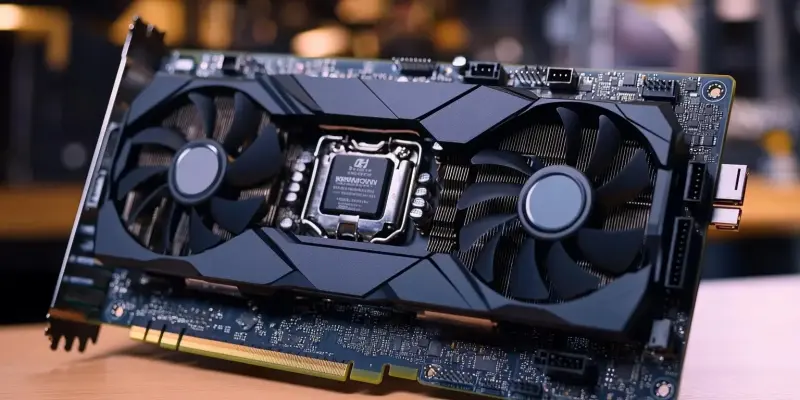As the world of video production and streaming continues to evolve, gamers and content creators are constantly on the lookout for advancements that can significantly improve their work. In response, AMD is poised to release their highly-anticipated “RDNA 4” Navi 48-based GPUs, such as the Radeon RX 9070 XT and RX 9070, equipped with notable features like AV1 B-frame encoding support. These innovations promise to enhance video compression and quality, setting a new benchmark in performance for end-users.
AV1 Encoding Support
One of the standout features of AMD’s upcoming higher-end RDNA 4 GPUs is their support for AV1 B-frame encoding. This enhancement, found specifically in GPUs with the Navi 48 die, marks a substantial leap in video compression technology, offering superior quality compared to previous iterations. The inclusion of AV1 encoding not only positions these GPUs as more efficient and powerful but also makes them ideal for users who rely heavily on video production and streaming. This technological advancement stands to set these GPUs apart in a rapidly competitive market.
Upcoming GPU Releases
The technology community is buzzing with anticipation for the reveal of Navi 48-powered GPUs, including the Radeon RX 9070 XT and RX 9070, expected to make their debut at the upcoming CES event. These GPUs are projected to deliver competitive performance, potentially rivaling the capabilities of NVIDIA’s RTX 4070 Ti and RTX 4080, especially in areas of gaming and productivity applications. The robust hardware encoding capabilities of these GPUs underline AMD’s commitment to delivering high-performance solutions that address the needs of advanced users and gaming enthusiasts alike.
Exclusions from Budget Models
In contrast to the advanced features offered in the higher-end models, AMD’s approach to their lower-end Navi 44-based GPUs suggests a different strategy. Targeted towards budget-conscious users, these models will omit hardware encoders, similar to AMD’s previous RDNA 2 budget models, such as the RX 6500 XT and RX 6400. While these GPUs might cater to users looking for affordable options, the lack of encoding features could be a letdown for those who require such functionalities in a more cost-effective package. The pricing for these models might stretch up to $349, which could influence purchasing decisions for consumers weighing the importance of encoding capabilities.
Broad Product Launches
AMD’s CES event promises more than just GPU releases. Alongside the RDNA 4 GPUs, the technology giant plans to unveil its new FSR 4 technology and the latest Ryzen 9 9000X3D processors, including models like the Ryzen 9 9950X3D and Ryzen 9 9900X3D. This broader product launch highlights AMD’s strategic initiative to expand their market footprint and provide a comprehensive suite of high-performance solutions for both gamers and content creators. Such a diverse lineup might suggest AMD’s ambition to cater to various user demands within a unified event.
Market Trends and AMD’s Position
As the landscape of video production and streaming keeps advancing, gamers and content creators are always seeking innovations that can considerably enhance their work. One of the most anticipated developments in this realm is from AMD, which is set to launch its “RDNA 4” Navi 48-based graphics processing units (GPUs), including the Radeon RX 9070 XT and RX 9070. These new GPUs are packed with features such as AV1 B-frame encoding support, a significant upgrade that could revolutionize video compression and quality. This encoding feature is particularly important for those looking to improve the efficiency and clarity of their video content. By offering higher performance and better visual results, these GPUs are poised to set a new standard for end-users, providing them with tools that can significantly enhance the quality of their streaming or video production projects. The expectation around these GPUs underscores the continuous quest for better, more reliable technology in the gaming and content creation industries.

